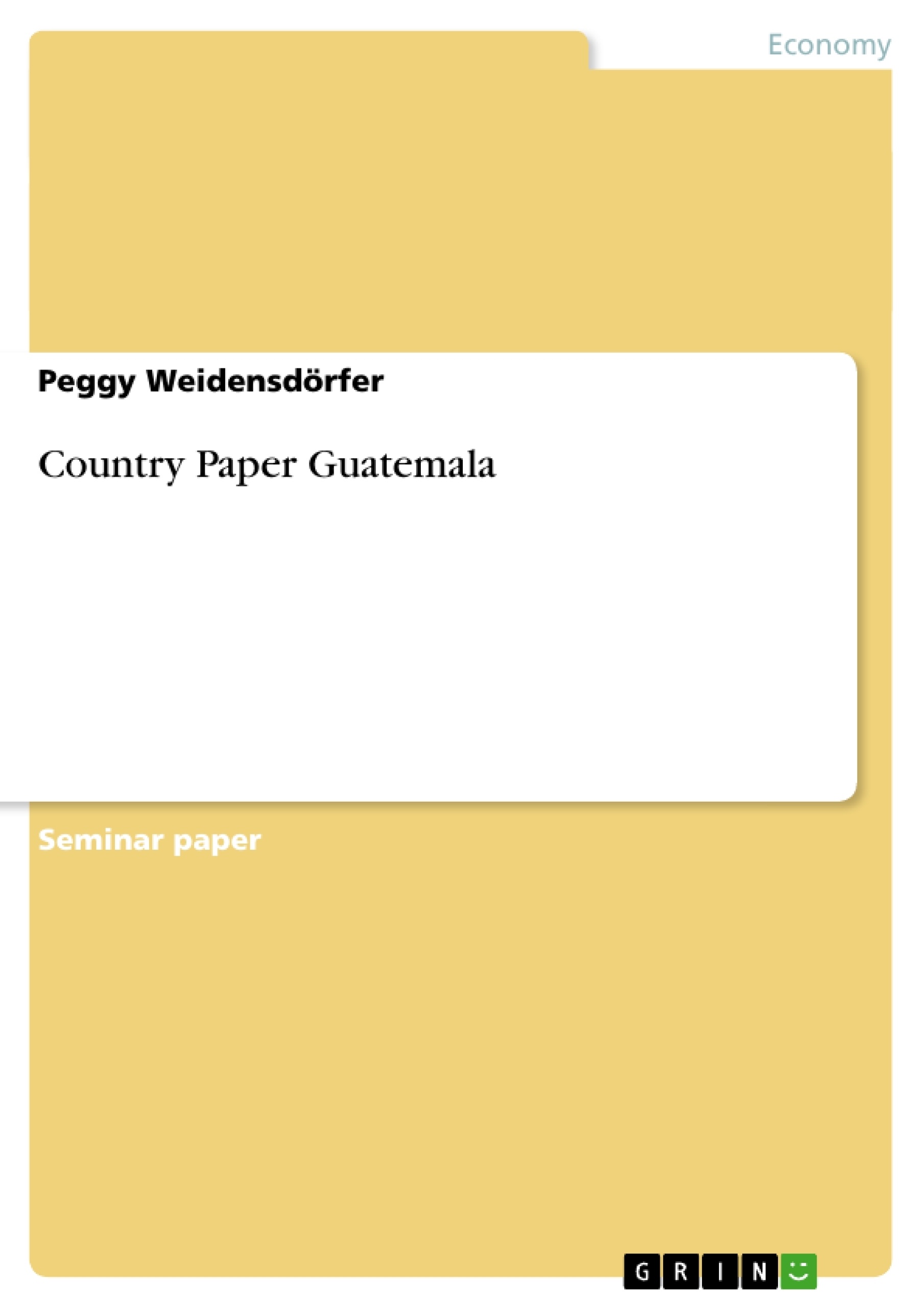Since its independence from Spain in September 1821, Guatemala suffered from the several rules which consisted of dictatorships, insurgencies, coups, Guerrilla fights and times of military rule. Only in 1985 the situation began to change and the various governments which followed tried to create a republic of peace, which protects the human rights and fights illiteracy, deficient health and social services, infant mortality, violence and corruption and forces the economical growth.
The economy of Guatemala is the largest in Central America. This report attempts to cover the most important information about the current economic situation in Guatemala and attempts to provide some interesting and necessary background information about the country.
Inhaltsverzeichnis (Table of Contents)
- Introduction
- General Information
- Basic geographical and demographical data
- Historical background
- Political System
- Economic Policy
- Development policy approach and its problems
- Participation of government in the economy
- Fiscal policy
- Taxation
- Income Tax
- Annual company tax
- Value added tax
- Stamp tax
- Import Taxes
- Monetary Policy
- Social issues
- Education
- Health
- Poverty
- Taxation
- Economic structure
- Agriculture
- Coffee
- Sugar
- Industry and manufacturing
- Fisheries industry
- Apparel industry
- Furniture industry
- Construction
- Mining
- Oil and gas
- Services
- Financial services
- Tourism
- Agriculture
- Current macroeconomic situation
- International economic relations
- Foreign trade by main commodities and countries
- Exports
- Imports
- Current account situation
- Foreign direct investment
- Development aid
- Foreign debt
- Participation in trade areas and customs unions
- Exchange rate policy
- Foreign trade by main commodities and countries
- Major problems of the economy and future perspectives
Zielsetzung und Themenschwerpunkte (Objectives and Key Themes)
This report aims to provide a comprehensive overview of the current economic situation in Guatemala, offering essential background information about the country. The report details Guatemala's economic policy and structure, as well as its social issues and international economic relations.
- Economic Development and Policy
- Social Challenges and Reforms
- International Economic Relations and Trade
- Impact of Political and Social Factors on Economic Growth
- Future Perspectives and Challenges
Zusammenfassung der Kapitel (Chapter Summaries)
- Introduction: This chapter provides a brief historical overview of Guatemala, highlighting its tumultuous past and the current government's efforts to establish a peaceful and stable republic. It introduces the focus of the report on Guatemala's economy.
- General Information: This chapter presents key facts about Guatemala, covering its geographical and demographic characteristics, its historical background, and its political system.
- Economic Policy: This chapter examines the government's economic policy, including its development policy approach, its participation in the economy, its fiscal policy, its monetary policy, and its efforts to address social issues like education, health, and poverty.
- Economic Structure: This chapter delves into the key sectors of the Guatemalan economy, including agriculture, industry and manufacturing, mining, oil and gas, and services.
- Current Macroeconomic Situation: This chapter analyzes the current economic performance of Guatemala, focusing on GDP growth, inflation, and unemployment.
- International Economic Relations: This chapter explores Guatemala's international economic relations, including its foreign trade, current account situation, foreign direct investment, development aid, foreign debt, participation in trade areas and customs unions, and exchange rate policy.
Schlüsselwörter (Keywords)
Key words and focus topics of the report include: Guatemalan economy, economic development, economic policy, fiscal policy, monetary policy, social issues, education, health, poverty, economic structure, agriculture, industry, mining, oil and gas, services, foreign trade, international economic relations, development aid, foreign debt, exchange rate policy, political system, and future perspectives.
- Citar trabajo
- Peggy Weidensdörfer (Autor), 2002, Country Paper Guatemala, Múnich, GRIN Verlag, https://www.grin.com/document/81115



